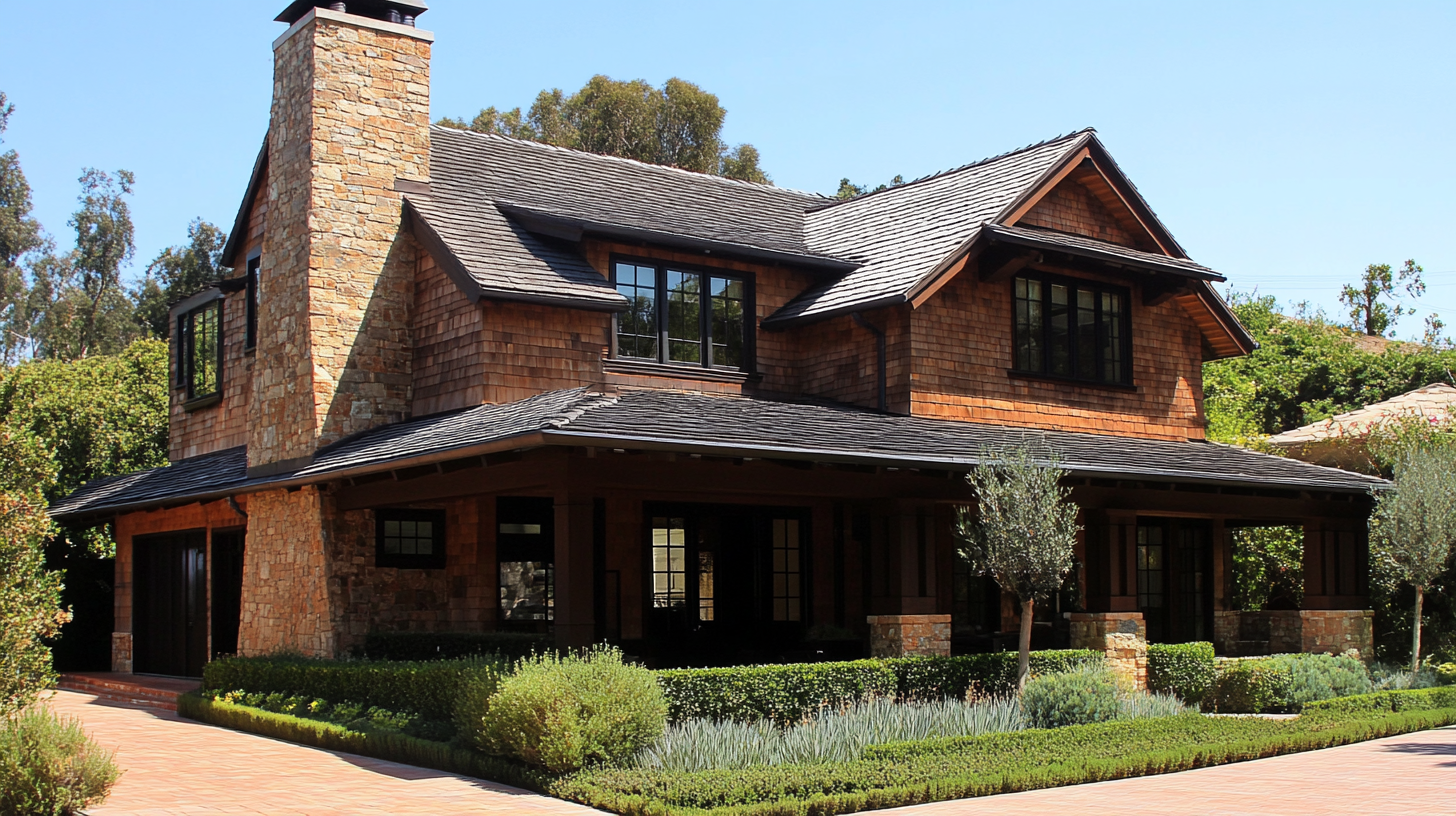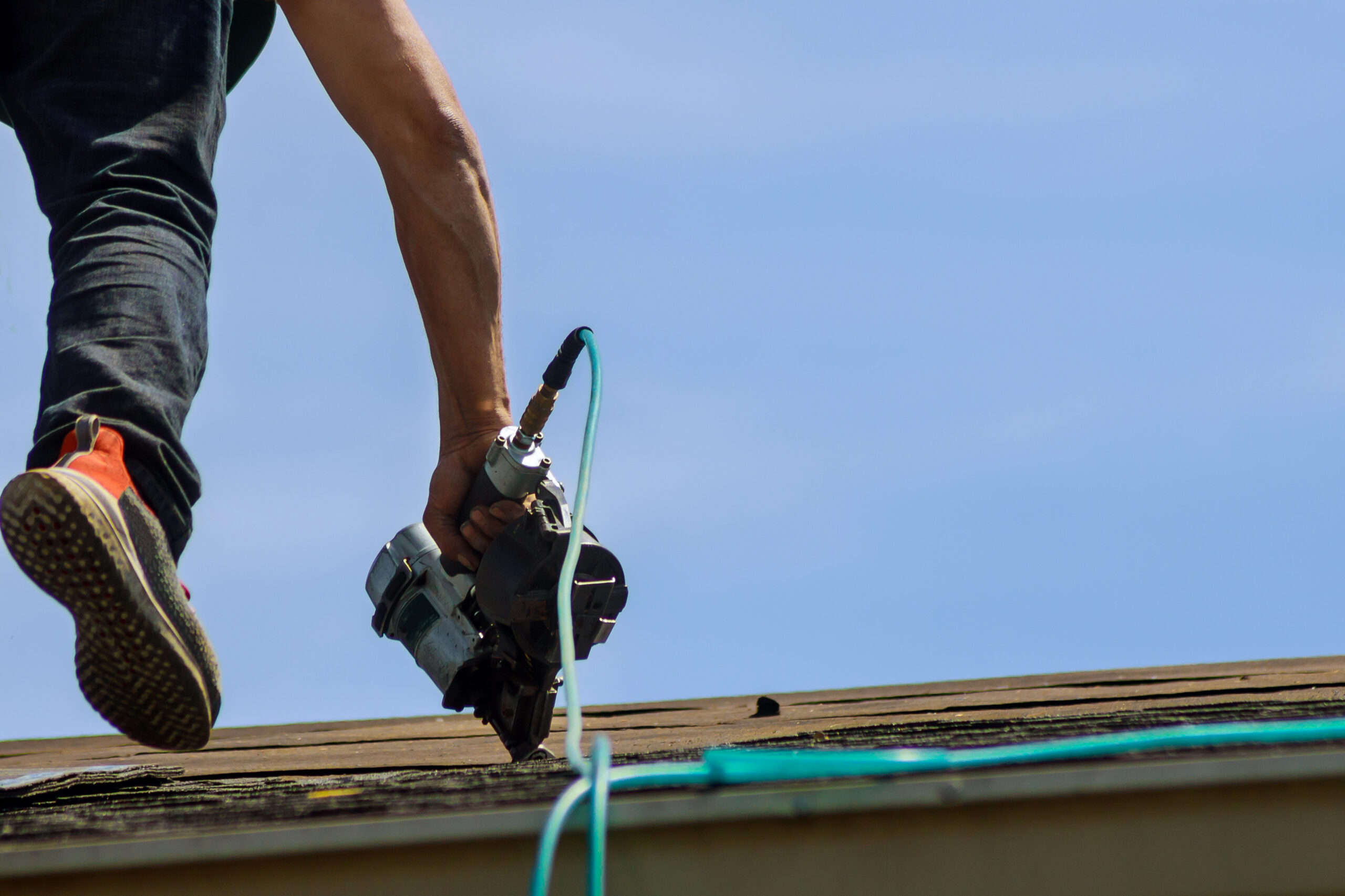Pros and Cons of Metal vs. Asphalt Roofing
8.7 Min Read
Metal roofing is made from materials like steel, aluminum, copper, or zinc. Known for its durability and longevity, metal roofing is becoming increasingly popular among homeowners.
Types of Metal Roofing Materials
Metal roofing comes in a variety of materials, each offering unique benefits. Steel is a common choice due to its strength and cost-effectiveness. Aluminum is lightweight and resistant to corrosion, making it ideal for coastal areas. Copper and zinc, while more expensive, offer exceptional durability and a distinctive aesthetic that develops a patina over time, adding character to the roof.
Installation Process of Metal Roofing
Installing metal roofing requires precision and expertise. The process involves measuring and cutting the metal panels to fit the roof’s dimensions, followed by secure fastening to the roof deck. This type of installation demands specialized tools and skills, often necessitating professional installation to ensure longevity and performance, which can drive up initial labor costs but offers peace of mind.
Design and Color Options
Metal roofs offer a plethora of design and color options. Homeowners can choose from a range of finishes, from sleek modern styles to traditional rustic looks. The color palette is vast, allowing homeowners to match the roof with the overall aesthetic of their home, enhancing curb appeal. The flexibility in design makes metal roofing a versatile choice for any architectural style.
Pros of Metal Roofing
- Longevity: Metal roofs can last 40 to 70 years, depending on the material. This is significantly longer than asphalt shingles, which typically last 20 to 30 years. With such a lifespan, homeowners can expect fewer replacements, translating to long-term savings.
- Durability: Metal roofs are highly resistant to weather elements. They can withstand strong winds, heavy snow, and are fire-resistant. This resilience makes them suitable for regions with extreme weather conditions, offering peace of mind during storms.
- Energy Efficiency: Metal roofs reflect solar radiant heat, which can reduce cooling costs by 10-25%. This reflective property helps maintain a comfortable indoor temperature, especially in hotter climates, and contributes to lower energy bills.
- Environmentally Friendly: Most metal roofs are made from recycled materials and are 100% recyclable at the end of their lifespan. This sustainability aspect appeals to eco-conscious homeowners looking to reduce their carbon footprint and contribute to a greener planet.
- Aesthetic Appeal: Metal roofs come in a variety of styles and colors, allowing for a customizable look. Whether opting for a modern or traditional design, metal roofing can enhance the architectural beauty of a home, adding to its value and curb appeal.
Cons of Metal Roofing
- Cost: The initial cost of metal roofing is higher than asphalt shingles. However, the longevity and energy savings can offset this over time. While the upfront investment is significant, the long-term benefits often justify the expenditure for many homeowners.
- Noise: Without proper insulation, metal roofs can be noisy during rain or hailstorms. This can be a concern for those sensitive to noise, but it can be mitigated with the installation of soundproofing materials, adding to the overall cost.
- Expansion and Contraction: Metal expands and contracts with temperature changes, which can cause fasteners to loosen over time. This requires periodic inspection and maintenance to ensure the roof remains secure and functional.
- Installation Complexity: Installing a metal roof requires specialized skills, which can increase labor costs. Finding experienced contractors is essential to ensure proper installation, which is critical for the roof’s performance and longevity.

Understanding Asphalt Roofing
Asphalt shingles are the most common roofing material in the United States. They are made of a fiberglass or organic base coated with asphalt and topped with mineral granules.
Types of Asphalt Shingles
Asphalt shingles come in two primary types: fiberglass and organic. Fiberglass shingles are lighter and offer better fire resistance, while organic shingles, made from recycled paper saturated with asphalt, provide more weight and durability. Understanding these differences can help homeowners choose the right type based on their specific needs and environmental conditions.
Installation Process of Asphalt Roofing
The installation of asphalt shingles is relatively straightforward, which contributes to their popularity. The process involves laying down a row of shingles, overlapping to create a water-resistant barrier. This ease of installation allows for faster project completion and reduced labor costs, making it an attractive option for many homeowners.
Design and Color Options
Asphalt shingles offer a wide range of design and color options, making them suitable for various architectural styles. From traditional three-tab shingles to dimensional shingles that mimic the appearance of natural materials like wood or slate, there are numerous choices to enhance a home’s aesthetic. The variety in color allows homeowners to personalize their roof to match their style preferences and increase curb appeal.
Pros of Asphalt Roofing
- Affordability: Asphalt shingles are one of the most affordable roofing materials, making them a popular choice for budget-conscious homeowners. Their low upfront cost makes them accessible for many, especially those seeking a quick and economical solution.
- Ease of Installation: Asphalt shingles are easier and quicker to install than metal roofing, reducing labor costs. This simplicity in installation can lead to shorter project timelines and less disruption to daily life during replacement or repair.
- Variety: Available in a wide range of colors and styles, asphalt shingles can complement any home design. This versatility allows homeowners to select a roof that enhances their home’s aesthetic, boosting its appeal and market value.
- Sound Insulation: Asphalt shingles provide better sound insulation than metal roofs, reducing noise from rain and hail. This quality can enhance indoor comfort, particularly in areas with frequent precipitation or storms.
Cons of Asphalt Roofing
- Lifespan: Asphalt shingles generally last 20 to 30 years, which is shorter than metal roofing. This shorter lifespan means more frequent replacements, which can add up in terms of costs over the long term.
- Durability: They are less durable than metal roofs and are more susceptible to wind and storm damage. Homeowners in regions with harsh weather may face higher maintenance and repair costs over time.
- Environmental Impact: Asphalt shingles are not recyclable and often end up in landfills. This environmental consideration may deter eco-conscious homeowners from choosing asphalt shingles as their roofing material.
- Maintenance: Asphalt roofs may require more frequent maintenance, such as replacing damaged shingles. Regular inspections and repairs are necessary to maintain the roof’s integrity and prevent leaks or other issues.
Comparing Costs: Metal Roofing vs Asphalt Roofing
When it comes to the cost of metal roofing vs asphalt roofing, there are several factors to consider:
Initial Costs
- Metal Roofing: Generally costs between $120 to $900 per square (100 square feet), depending on the material and style. This wide range reflects the different types of metal used, from more affordable options like steel to premium choices like copper.
- Asphalt Shingles: Typically range from $100 to $200 per square. The lower cost makes them a viable option for homeowners seeking to minimize initial expenses while still achieving a functional and attractive roof.
Long-Term Costs
While metal roofs have a higher upfront cost, their long lifespan and energy efficiency can lead to savings over time. The reduced need for repairs and replacements, coupled with lower energy bills, can make metal roofing a cost-effective choice in the long run. Asphalt shingles, although cheaper initially, may require more frequent replacements and repairs, which can accumulate over the years and offset the initial savings.
Maintenance Expenses
Metal roofs generally require less maintenance compared to asphalt shingles, which can incur additional costs over time. Regular inspections and occasional repairs are necessary for both types, but metal roofs typically demand less frequent attention. This factor should be considered when evaluating the long-term financial implications of each roofing material.

Making the Right Choice in Roof Material
The decision between metal and asphalt roofing depends on various factors including budget, climate, and personal preferences.
Consider Your Budget
If your budget allows for a higher initial investment, metal roofing may be the better long-term choice. The upfront costs are higher, but the potential savings on energy bills and reduced frequency of replacements can justify the expense. However, if you need a cost-effective solution upfront, asphalt shingles are a viable option, offering immediate affordability and ease of installation.
Think About Your Climate
In areas prone to extreme weather, the durability of a metal roof might be more beneficial. Their resistance to wind, fire, and other harsh conditions makes them a reliable choice for homeowners in such regions. Conversely, in milder climates, asphalt shingles can provide adequate protection, balancing cost and performance effectively.
Evaluate Aesthetic Preferences
Both metal and asphalt roofing offer a range of styles and colors. Consider what look you want for your home and choose a material that complements your vision. Metal roofing offers a sleek, modern appearance, while asphalt shingles provide a classic, traditional look. Your choice should align with your home’s architectural style and your personal taste.
Assess Environmental Impact
Consider the environmental implications of your roofing choice. Metal roofing’s recyclability and energy efficiency make it a more sustainable option. If reducing your carbon footprint is a priority, metal roofing may align better with your values. Conversely, asphalt shingles, while less eco-friendly, offer other practical benefits that may outweigh environmental concerns for some homeowners.
Conclusion
Both metal and asphalt roofing have their pros and cons. Metal roofs offer durability and energy efficiency but come with a higher price tag. Asphalt roofs are affordable and easy to install but may require more maintenance over time.
Ultimately, the best roofing material for you will depend on your specific needs and priorities. By considering the pros and cons of metal vs asphalt roofing, you can make an informed decision that protects your home and investment for years to come. Take into account your budget, climate, aesthetic preferences, and environmental impact to choose the roofing material that best aligns with your goals and values.
Contact Frontline Roofing for Your Roofing Needs
Are you ready to make the best choice for your roofing project? Whether you’re leaning towards the durability of metal roofing or the affordability of asphalt shingles, Frontline Roofing is here to help! Our team of experienced professionals can guide you through the selection process, ensuring you find the perfect roofing solution for your home.
Get in Touch Today!
Don’t wait any longer! Contact Frontline Roofing for a free consultation and estimate. Let us help you protect your home with a roof that meets your needs and enhances your property’s value. Reach out to learn more about our services and schedule your appointment!
continue reading
Related Posts
When it’s time to repair or replace your roof, one
When it comes to commercial and industrial roofing in California,
Your roof is your home’s first line of defense against






